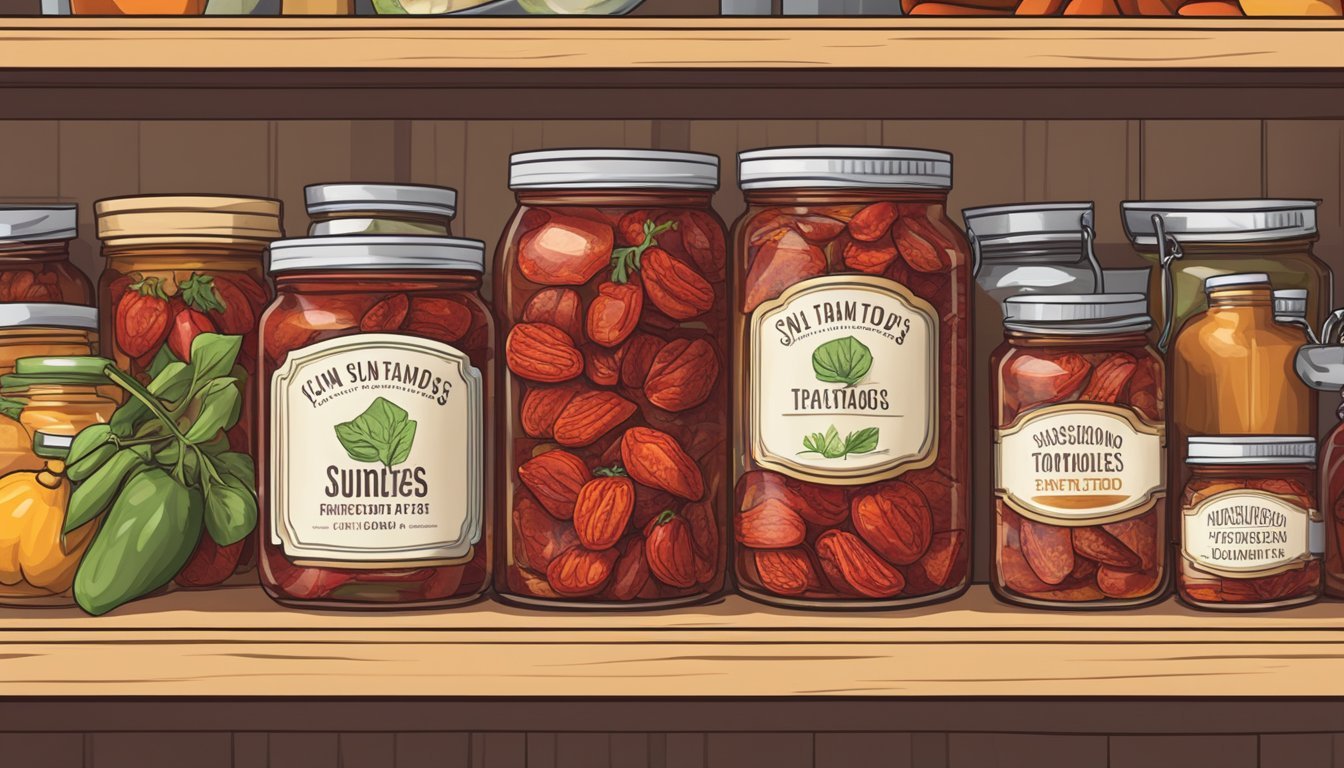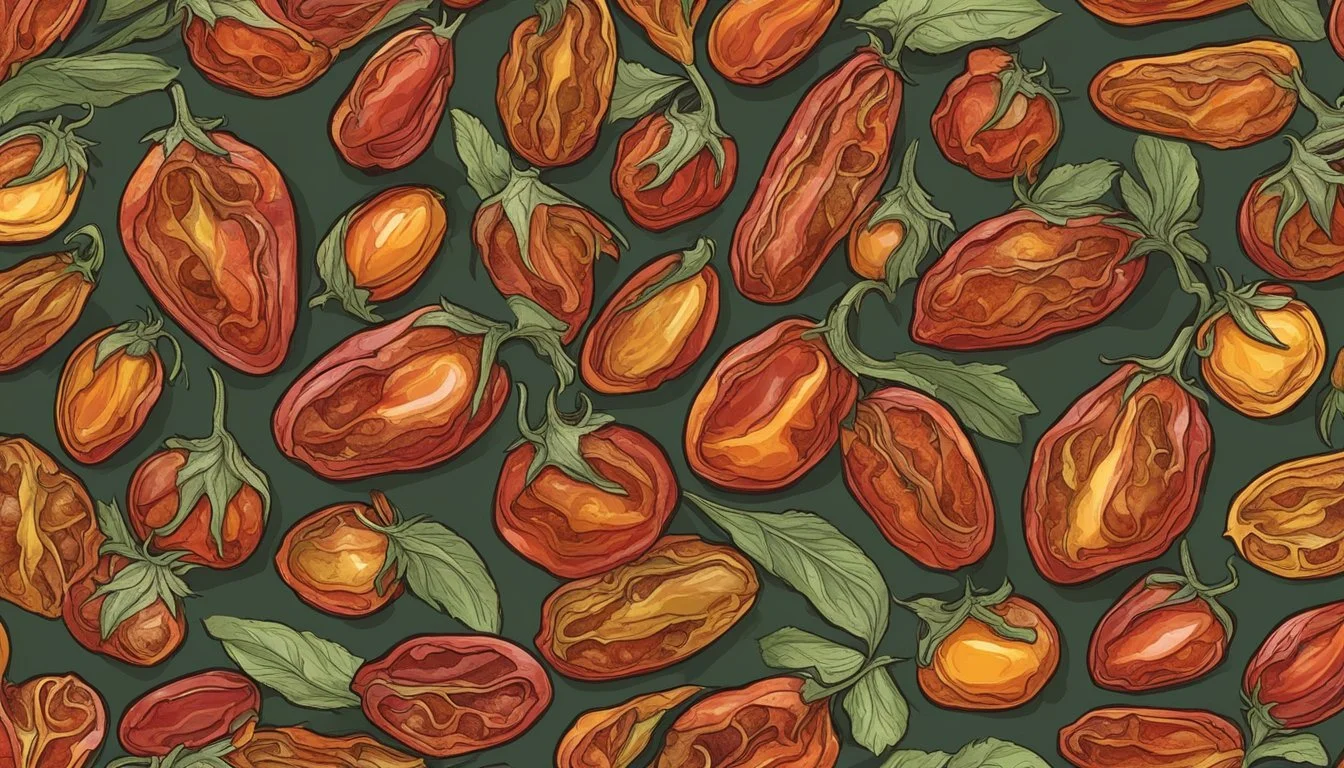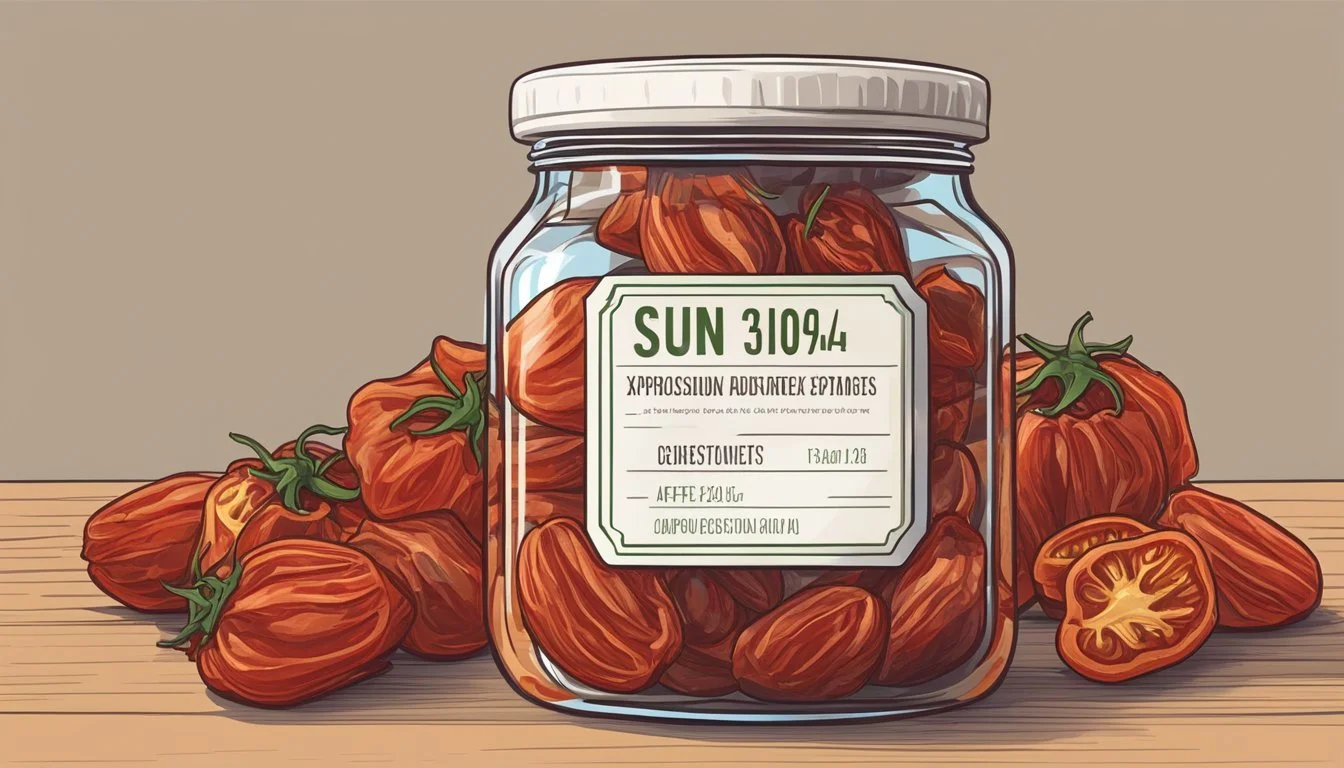Is it Safe to Eat Expired Sun-Dried Tomatoes?
Understanding Food Safety Limits
Sun-dried tomatoes (What wine goes well with tomatoes?) are a popular ingredient offering a burst of flavor to a variety of dishes, from pastas to salads. As with all food products, they have a shelf life that consumers need to be aware of to ensure both quality and safety. The safety of consuming sun-dried tomatoes past their expiration date depends on various factors, such as their method of preservation and storage conditions. Properly stored dry sun-dried tomatoes can last up to a year, while those packed in oil may remain edible for up to two years. However, once the packaging is opened, their shelf life can be significantly reduced.
The signs of spoilage in sun-dried tomatoes are similar to those of other food products—discoloration, a sour or off odor, and the presence of mold all indicate that the tomatoes should not be consumed. Eating expired sun-dried tomatoes that display these signs may lead to foodborne illnesses, with symptoms like nausea and vomiting. It's crucial for consumers to inspect their sun-dried tomatoes thoroughly before consumption and to store them according to the manufacturer's recommendations to maximize shelf life and maintain safety.
For those with a penchant for making homemade sun-dried tomatoes, it's worth noting that overall longevity may differ from commercially prepared products due to the absence of preservatives. Homemade versions should be closely monitored for freshness and stored properly to ensure they remain safe to eat. As a general rule, any questionable change in appearance, smell, or texture is a clear indication that the sun-dried tomatoes should not be eaten, regardless of their expiration date.
Understanding Sun-Dried Tomatoes
Sun-dried tomatoes are a versatile ingredient known for their intense flavor and nutritional benefits. They come in several types and forms, undergo a unique drying process, and offer a range of nutrients beneficial to health.
Types and Forms
Sun-dried tomatoes are available in various forms:
Dry-packed: These are dehydrated tomatoes often found in airtight bags or containers.
Oil-packed: These tomatoes are dried and then preserved in oil, sometimes with added herbs and spices.
Each type adds a unique texture and flavor to dishes, leveraging the concentrated, intense flavor of sun-dried tomatoes to enhance meals.
Drying and Preservation Process
The drying process involves:
Harvesting ripe tomatoes.
Slicing the tomatoes to expedite the drying process.
Laying the slices out to dry under the sun or within a controlled environment.
Proper drying and preservation are critical to prevent spoilage. Sun-dried tomatoes should be stored in a cool, dark place or refrigerated once opened to maintain their quality.
Nutritional Profile
Sun-dried tomatoes are praised for their nutrient content:
Vitamin C: A potent antioxidant important for skin health and immune function.
Lycopene: Associated with reduced risk of certain chronic diseases.
Potassium: Helps regulate fluid balance and nerve signals.
Antioxidants: Contribute to overall health and may protect against free radical damage.
These nutrients, coupled with their intense flavor, make sun-dried tomatoes a versatile ingredient in various cuisines.
Shelf Life and Storage
Sun-dried tomatoes are a versatile ingredient with a varied shelf life that is influenced by their storage conditions. Proper storage is pivotal for maintaining their quality and safety.
Factors Affecting Shelf Life
The shelf life of sun-dried tomatoes depends on whether they are dry-packed or stored in oil. Dry-packed sun-dried tomatoes typically have a shelf life of up to one year when kept in the right conditions. However, sun-dried tomatoes preserved in oil can last for up to two years. Key factors affecting the longevity of sun-dried tomatoes include:
Temperature: They should be stored in a place where the temperature is below 65°F.
Humidity: Lower humidity levels are preferable to prevent spoilage.
Light: A cool, dark place prevents the degradation of quality.
Recommended Storage Methods
To maximize shelf life, one can follow these recommended storage methods:
Dry-Packed Tomatoes:
Store in an airtight container.
Keep in a cool, dark place such as a pantry or root cellar.
Oil-Packed Tomatoes:
Refrigerate after opening.
Use within a few weeks once opened to ensure freshness.
Extending Shelf Life
Extending the shelf life of sun-dried tomatoes can be achieved with proper storage:
For unopened packages, ensure they are in a dry, dark environment.
Once opened, transfer the product to an airtight container.
Refrigerate to maintain quality, especially once the original packaging is compromised.
Consider freezing if long-term preservation is needed, although this may alter texture.
Detecting Spoilage in Sun-Dried Tomatoes
Identifying spoiled sun-dried tomatoes is critical for food safety. One should examine the sensory characteristics, including visual appearance, texture, and smell, to detect spoilage.
Visual Inspection
Discoloration: Sun-dried tomatoes that have gone bad may exhibit noticeable changes in color. They can become darker or show patches of white or green, which often indicate mold growth.
Mold: The presence of fuzzy spots of mold is a clear sign of spoilage. Any visible mold means the sun-dried tomatoes should be discarded immediately to avoid the risks associated with consuming mold and bacteria.
Texture and Consistency
Texture Changes: A change in texture can signal that sun-dried tomatoes have spoiled. Fresh sun-dried tomatoes are typically slightly chewy, whereas spoiled ones may feel slimy or unusually tough.
Mold Growth Impact: Mold growth not only affects appearance but can also change the texture, making the sun-dried tomatoes unusually mushy or sticky.
Odor Assessment
Odor: A strong, off-putting smell is a clear indicator that sun-dried tomatoes have gone bad. While they naturally have a rich, tangy odor, the development of an unpleasant or sour smell signifies spoilage.
Abnormal odors are a sign that bacteria may be present, and consumption should be avoided to prevent possible foodborne illness.
Health Considerations
When consuming sun-dried tomatoes past their expiration date, there are health considerations to take into account. The risks can range from mild to severe depending on the spoilage extent and the presence of preservatives, which may prolong a product’s edible period.
Risks of Eating Expired Tomatoes
Sun-dried tomatoes, like any food item, can become unsafe if consumed after expiry. Spoilage can result from inappropriate storage, leading to the growth of foodborne pathogens. These can cause symptoms such as:
Nausea
Vomiting
Diarrhea
Abdominal pain
The risk is higher for immune-compromised individuals, the elderly, pregnant women, and young children. It's critical to inspect sun-dried tomatoes for signs of spoilage such as mold, an off smell, or a change in texture.
Preservatives and Food Safety
Preservatives in sun-dried tomatoes can include oils, salts, and chemical additives that inhibit the growth of bacteria and fungi. While these can extend shelf life, they do not guarantee safety indefinitely. Over-reliance on preservatives may lead consumers to overlook visual and olfactory cues that indicate spoilage. Any sun-dried tomato product, whether with or without preservatives, should be handled with caution past its expiration date.
Effective Uses of Sun-Dried Tomatoes
Sun-dried tomatoes offer a concentrated burst of flavor and can be a versatile ingredient in many dishes. Whether oil-packed or dry, their unique taste enhances the overall profile of a dish, making proper preparation key.
Oil-Packed vs Dry-Packed
Oil-packed sun-dried tomatoes are often marinated in olive oil and sometimes include herbs and spices, enhancing their flavor. These are typically ready to use from the jar and can add depth to sauces, pasta dishes (What wine goes well with pasta dishes?), and salads. They are moist and can be chopped and added directly to recipes.
In contrast, plain sun-dried tomatoes usually come dry-packed and require some preparation before use. Their flavor is more intense, and they lend themselves well to being rehydrated for a softer texture. These are ideal for inclusion in recipes where additional moisture is desired, such as in stews or baked dishes.
Rehydrating and Preparation Techniques
To rehydrate dry-packed sun-dried tomatoes, one must soak them in warm water, wine, broth, or a mixture of water and seasonings, for about 30 minutes or until they soften. After rehydration, one should drain off excess liquid and pat the tomatoes dry. This process not only renders them ready for cooking but can also infuse them with additional flavour if a seasoned liquid is used.
Incorporation into Dishes
Sun-dried tomatoes can be chopped, diced, or sliced to fit the recipe at hand. They are especially popular in:
Pasta dishes: Adding a rich, savory flavor, especially when paired with olive oil and fresh herbs.
Salads: Offering a chewy texture and tangy taste that complements greens and vinaigrettes.
Sandwiches and pizzas: Providing a sweet and intense tomato flavor that stands out among other ingredients.
When cooking, it is crucial to consider the moisture content and whether or not additional oil or seasoning is needed, as the tomatoes already carry concentrated flavor.
Preservation Techniques
Preserving sun-dried tomatoes properly is key to maintaining their quality and safety for consumption. Specific storage methods differ depending on whether the tomatoes are homemade or store-bought and whether they have been opened.
Storing After Opening
Once opened, store-bought sun-dried tomatoes should be transferred to an airtight container. They should then be kept refrigerated to extend their shelf life, which can be anywhere from a few weeks to a month, depending on the preservation method used prior to opening. It's important to ensure that the seal is tight to keep out moisture and other contaminants.
Freezing and Refrigeration
Freezing sun-dried tomatoes is an excellent way to preserve their flavor and longevity. One should lay the tomatoes flat in a single layer on a baking sheet to freeze, then transfer them into an airtight container or heavy-duty freezer bag. They can be stored in the freezer for up to 8 months. Refrigeration, typically below 65°F, is suited for short-term storage and can be considered for both store-bought and homemade sun-dried tomatoes.
Homemade vs Store-Bought
Homemade sun-dried tomatoes, when properly dehydrated using a dehydrator or other drying methods, can be stored in a cool, dry place for up to 6 months; refrigeration can extend this time. Store-bought varieties may already be packed with preservatives that extend shelf life. In either case, both kinds should be placed in a dark area away from direct sunlight to prevent spoilage. The storage conditions for homemade sun-dried tomatoes can be more variable depending on the method and thoroughness of the drying process.
FAQs about Sun-Dried Tomatoes
This section addresses frequently asked questions on the shelf life and safe consumption of sun-dried tomatoes, highlighting storage tips and common concerns.
Common Concerns
Do sun-dried tomatoes go bad? Yes, sun-dried tomatoes can spoil, especially when not stored properly. Packaging and storage conditions directly influence their longevity. Dry-packed sun-dried tomatoes typically last up to a year at room temperature when kept in an airtight container away from heat and light. When packed in oil and refrigerated, they can last up to two years. Once opened, refrigeration is recommended to preserve freshness, and they should be used within weeks; dry-packed varieties within a few weeks, and those in oil can last up to five days.
Signs of spoiling: Look for changes in color, scent, or a chewy texture becoming unusually tough or soggy. If the tomatoes exhibit any mold, an off smell, or a significant change in appearance, they should not be consumed.
Best Practices
How to store sun-dried tomatoes for quality maintenance? To maintain freshness and quality, adhere to the following best practices:
For dry-packed sun-dried tomatoes, store them in a cool, dark place in an airtight container. The ideal storage temperature is below 65°F (18°C).
Refrigeration is suitable for short-term storage, but not ideal for extended periods.
Sun-dried tomatoes packed in oil should be kept refrigerated after opening. Ensure the oil covers the tomatoes completely to reduce the risk of bacterial growth.
Why refrigerate after opening? Refrigeration slows down the process of spoiling because it inhibits the growth of bacteria that can cause food to deteriorate.
Extended lifespan tips: Additives such as garlic or herbs in the oil can alter the lifespan of sun-dried tomatoes. Always check the expiry date and look for any signs of spoilage before consuming, even if the product is within the expected lifespan. Use sun-dried tomatoes in a variety of dishes, like salads, pastas, or as toppings, to enjoy their flavor while they are still fresh.









